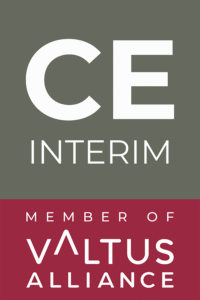La gestion d'une entreprise comporte son lot de défis, mais peu d'entre eux sont aussi décourageants que la détresse financière. En tant que spécialiste du financement des entreprises et de la gestion des dettes, j'ai vu d'innombrables entreprises confrontées à des choix difficiles en ce qui concerne leur avenir financier. Parmi les termes les plus mal compris, on trouve l'insolvabilité et la faillite - deux situations graves, mais fondamentalement différentes.
Si vous êtes aux prises avec des dettes, la compréhension de ces termes pourrait vous permettre de sauver votre entreprise.
Dans cet article, nous allons analyser les distinctions, proposer des solutions et vous aider à déterminer si l'insolvabilité ou la faillite s'applique à votre entreprise.
Qu'est-ce que l'insolvabilité ?
L'insolvabilité est une situation financière dans laquelle votre entreprise n'est pas en mesure d'honorer ses dettes à leur échéance. Elle ne signifie pas nécessairement la fin de votre entreprise, mais c'est un signal d'alarme qui indique que des mesures doivent être prises.
Types d'insolvabilité
Il existe deux grands types d'insolvabilité, dont la compréhension vous aidera à mieux diagnostiquer votre situation :
- Insolvabilité des flux de trésorerie: Cela se produit lorsque votre entreprise possède des actifs, mais que vous ne disposez pas de suffisamment de liquidités pour rembourser les dettes immédiates. Par exemple, une entreprise peut disposer d'un parc de véhicules ou de biens immobiliers, mais ne pas être en mesure de couvrir les salaires ou de payer un fournisseur.
- Bilan Insolvabilité: Dans ce scénario, votre passif est supérieur à votre actif. Même si vous gagnez suffisamment d'argent pour rembourser vos dettes à court terme, votre entreprise est techniquement insolvable car votre passif à long terme est supérieur à votre actif.
Ces deux types d'insolvabilité nécessitent une gestion proactive, mais ils peuvent souvent être inversés sans qu'il soit nécessaire de recourir à des mesures plus radicales.
Qu'est-ce que la faillite ?
Alors que l'insolvabilité est un état financier, la faillite est une procédure juridique. C'est un outil utilisé par les entreprises pour liquider leurs actifs ou réorganiser leurs dettes afin de prendre un nouveau départ.
Types de faillites pour les entreprises
- Chapitre 7 de la loi sur les faillites: Connu sous le nom de liquidation failliteDans le cas d'une faillite, ce processus implique la vente des actifs de l'entreprise pour payer les créanciers. Une fois cette étape franchie, l'entreprise est généralement dissoute.
- Chapitre 11 de la loi sur les faillites: Souvent appelé faillite de réorganisation, le chapitre 11 permet aux entreprises de poursuivre leurs activités tout en restructurant leurs dettes sous le contrôle du tribunal. Il s'agit d'un choix courant pour les entreprises qui pensent pouvoir redevenir rentables grâce à un plan de gestion des dettes adapté.
- Chapitre 13 de la loi sur les faillites: Cette procédure est plus couramment utilisée par les particuliers, mais elle peut s'appliquer aux propriétaires de petites entreprises individuelles. Elle consiste à établir un plan de remboursement qui permet au débiteur de rembourser une partie de ses dettes au fil du temps sans perdre ses actifs.
Insolvabilité et faillite : Les principales différences
La différence fondamentale entre l'insolvabilité et la faillite réside dans le fait que l'insolvabilité est un problème financier, alors que la faillite est une solution juridique. Souvent, les entreprises peuvent gérer ou inverser l'insolvabilité sans l'intervention d'un tribunal, alors que la faillite déclare formellement que l'entreprise ne peut pas faire face à ses obligations financières et nécessite une intervention judiciaire.
Voici une comparaison simple :
- Insolvabilité: Votre entreprise n'est pas en mesure de payer ses dettes à temps, mais il est encore possible de la redresser en négociant ses dettes, en vendant ses actifs ou en procédant à une restructuration financière. Pour les personnes confrontées à des circonstances similaires, une option formelle telle qu'une procédure d'insolvabilité peut s'avérer utile. accord d'insolvabilité personnelle peut constituer une alternative structurée à la faillite.
- Faillite: La procédure légale qui consiste à déclarer que l'on ne peut pas payer ses dettes. Les créanciers peuvent être contraints d'accepter un plan de remboursement approuvé par le tribunal ou la liquidation des biens.
Exemple :
Supposons que vous dirigiez un magasin de détail. En raison de la lenteur des ventes et de problèmes liés à la chaîne d'approvisionnement, vous ne pouvez pas payer vos fournisseurs à temps : c'est l'insolvabilité de trésorerie. Si vos dettes dépassent la valeur des stocks et des biens de votre magasin, vous êtes également insolvable sur le plan du bilan. Toutefois, grâce à une négociation stratégique ou à une restructurationVous pourrez ainsi éviter la faillite et retrouver une certaine stabilité.
Signes d'insolvabilité pour votre entreprise
Il est essentiel de reconnaître les signes avant-coureurs de l'insolvabilité afin de pouvoir agir rapidement :
- Questions relatives aux flux de trésorerie: Vous avez du mal à couvrir les dépenses opérationnelles telles que les salaires, les loyers ou les paiements aux fournisseurs.
- Accumulation de dettes: Votre dette ne cesse de croître et les créanciers vous appellent de plus en plus souvent.
- Difficulté à obtenir un financement: Les banques ou les investisseurs ne sont pas disposés à vous accorder un crédit en raison de votre instabilité financière.
Si vous remarquez l'un de ces signes, il est temps d'envisager des solutions.
Solutions pour éviter la faillite
Même si votre entreprise est insolvable, cela ne signifie pas automatiquement que la faillite est inévitable. Voici quelques options à envisager :
1. Négociation de la dette
Contactez vos créanciers et expliquez-leur votre situation. De nombreuses entreprises parviennent à renégocier les conditions de remboursement, surtout si l'alternative est la faillite, où elles risquent de recevoir encore moins. Les prêteurs peuvent accepter de réduire les paiements, de prolonger les délais ou même d'annuler la dette.
2. Vente d'actifs non essentiels
Si vous possédez des actifs de valeur qui ne sont pas essentiels aux activités de votre entreprise, envisagez de les vendre pour obtenir des liquidités et stabiliser votre entreprise. Par exemple, si vous possédez des véhicules de société qui ne sont pas utilisés en permanence, leur vente pourrait générer des liquidités immédiates.
3. Restructuration et réduction des coûts
Évaluez vos dépenses et cherchez des moyens de réduire les coûts sans sacrifier la fonctionnalité de base de votre entreprise. Pouvez-vous externaliser certaines opérations ? Renégocier les conditions de location ? La réduction des frais généraux peut permettre de dégager des liquidités pour rembourser les dettes.
4. Fusions ou acquisitions
Dans certains cas, la fusion ou l'acquisition par une entreprise plus grande et financièrement stable peut être une bouée de sauvetage. Cette situation est particulièrement fréquente dans les secteurs où la valeur de la marque ou de la clientèle est plus importante que le passif financier immédiat.
Quand la faillite est le bon choix
Parfois, le choix de la faillite peut être la meilleure - ou la seule - option disponible. Si vos créanciers vous poussent à engager des poursuites judiciaires ou si vos dettes dépassent de loin votre capacité de paiement, la faillite peut vous soulager.
Signes clés de la nécessité de déposer une demande de faillite
- Les créanciers intentent un procès: Si vous recevez des avis juridiques de vos créanciers, la faillite peut être le meilleur moyen d'éviter la saisie des biens ou d'autres complications juridiques.
- Surcharge de la dette: Lorsque la dette est insurmontable et qu'aucune restructuration ou négociation ne semble possible, le dépôt de bilan permet une rupture nette ou un plan de remboursement gérable.
- Protéger les actifs clés: La faillite peut vous permettre de conserver les actifs clés de votre entreprise pendant que vous réorganisez vos dettes, en particulier dans le cadre du chapitre 11.
Conclusion : Naviguer dans l'insolvabilité ou la faillite
L'insolvabilité et la faillite sont des situations difficiles, mais elles ne doivent pas signifier la fin de votre entreprise. Grâce à une planification minutieuse et à des conseils professionnels, de nombreuses entreprises parviennent à surmonter leurs difficultés financières et à en sortir renforcées. Reconnaître les signes précoces et connaître les options qui s'offrent à vous - qu'il s'agisse de la négociation des dettes ou de la faillite - peut faire toute la différence.
Si votre entreprise a du mal à faire face à ses obligations financières, il est essentiel de demander conseil à des experts financiers et juridiques qui peuvent vous aider à déterminer le meilleur plan d'action. Parfois, il suffit d'une bonne stratégie de restructuration pour redresser la situation, et dans d'autres cas, la faillite peut être la voie à suivre pour prendre un nouveau départ.
Quoi qu'il en soit, connaître la différence entre l'insolvabilité et la faillite est la première étape pour prendre des décisions éclairées sur l'avenir de votre entreprise.





